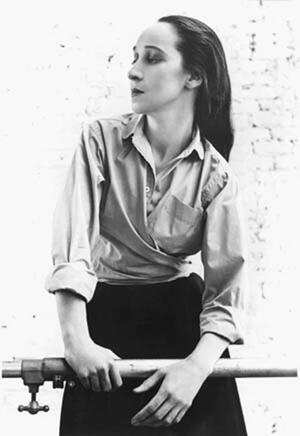Radical dance pioneer Anna Sokolow debuts on Broadway
Dancer and choreographer Anna Sokolow debuted on Broadway on November 14, 1937. This “debut” was unusual, in that Sokolow’s works had already been performed extensively off-Broadway. For her official debut, Sokolow chose a number of compositions with biting social and political commentary. Strange American Funeral, for example, was based on a poem about an immigrant steelworker killed by falling into a vat of boiling metal. As a reviewer commented, “The bitter satire and relentless expression of struggle was carried out with such intensity of purpose as to make one’s blood race with driving force and rouse the most lethargic observer to indignant approbation.” Excerpts from a War Poem was also based on a poem, “War is Beautiful,” but this time Sokolow treated the poem with acerbic satire. Critic Marjorie Church wrote in response that Sokolow “has taken the essence of fascism, embodied in a poem extolling the beauties of war, and has plucked this expression of an ideology mercilessly apart, line by line, exposing a ruthlessness, a savagery, and a masochistic blindness underlying this viewpoint which are appalling in their implications.”
Sokolow got her professional start in “radical dance” in 1929 when she joined Martha Graham’s dance company, and for the next decade she studied and danced with Graham, but she also began to work with other groups and to choreograph pieces of her own. Sokolow felt the need to move beyond Graham’s orbit to draw upon her own ethnic background and to use dance to dramatize the economic, social, and political crises of the time.
Sokolow’s first major composition for a group, Anti-War Trilogy, was performed at the 1933 First Anti-War Congress, and the dangers of war and fascism continued to be reflected in her later work. Sokolow was a key figure in the development of modern dance in both Israel and Mexico, and worked with a variety of dance forms.
Sokolow often worked with theater productions, choreographing many Broadway performances. She was a central figure in the choreography and staging of the musical Hair in 1967.
In the later part of her career, Sokolow incorporated Jewish themes more heavily in her work. Her first piece with clear Jewish content was The Exile (1939), and many of her compositions returned to the themes of exile and suffering. Her 1945 Kaddish, which was choreographed just as the war was ending, drew upon traditional Jewish elements to convey pain and suffering within the piece. Sokolow’s 1961 work, Dreams, was the first serious dance exploration of the Holocaust. She also based a number of her works on Jewish female figures, both Biblical and modern, ranging from Ruth and Deborah to Hannah Senesh and Golda Meir.
Sources: Jewish Women in America: An Historical Encyclopedia pp. 1278-1280; Boston Transcript, April 1, 1939; Marjorie Church, Dance Observer, December 1937, cited in Larry Warren, Anna Sokolow: The Rebellious Spirit (Amsterdam: Harwood Academic Publishers, 1998), 53.




Is there any video footage that we can see of her dancing Anna Sokol?
Are any of Anna's performances or her choreography with herself or others performing it, on film and available to view soemwhere? thanks so much for this article, she was an amazing human being and extraordinary artist!